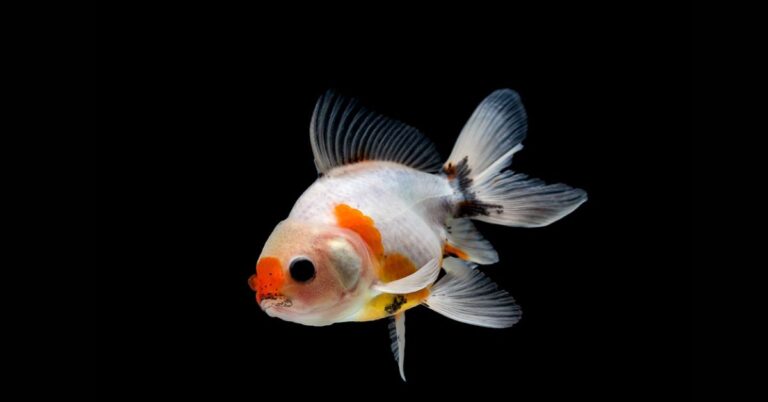Goldfish are some of the most common and treasured types of freshwater fish around the world. Their bright colors, elegant movements in water, and attractive characters have enchanted people for many years. However, goldfish owners may sometimes experience a strange occurrence in which their once-colorful goldfish have turned black. This may be worrying as some pet owners will ask themselves why their goldfish is turning black.
Common Goldfish Colors
The variety of colors observed in goldfish is also staggering, from classical red-orange color to shining white or calico patterns or even fantastic metallic hues. Such brilliant colors come about as a result of the genetic composition of the species and surrounding conditions. It is important to know this natural spectrum if you are going to recognize when a change in color might imply something deeper.
Understanding Color Changes in Goldfish
Goldfish have the unique characteristic of changing their color as they grow. This color change can be brought about by various factors such as the quality of water, diet, or genetics inherent within a particular fish’s genes. While some changes are normal, others might signal health problems that require attention.
Factors that May Cause a Goldfish to Turn Black
There are several possible reasons why your goldfish may turn black. Here are some:
- Water Quality: High levels of ammonia, nitrites, and nitrates, which make up poor-quality water, can distress fish, leading them to change their colors. To maintain healthy goldfish with bright colors, one must ensure proper water parameters.
- Diet: Incorrect or insufficient feeding habits can also cause changes in color among fishes. Remember, certain nutrients like carotenoids are necessary for maintaining those vivid colors. A portion of high-quality food with good color enhancers can assist in preventing or reversing loss of color.
- Genetics: Some species, like the Black Moor or Pearlscale, tend to acquire a darkened skin that eventually turns black over time. This is a natural feature and not necessarily to be interpreted as sick.
- Diseases: Goldfish can also change color or develop dark patches due to some diseases like skin infections, parasites or organ malfunction. In such cases, it is important to identify the root problem and address it.
Water conditions that lead to too much ammonia, nitrites, or nitrates badly affect the health of these fish, causing them to lose their colors. Regularly testing water, partial volume replacement, and proper filtration should be practiced by goldfish keepers to create a healthy environment.
Water Quality and Its Impact on Goldfish Color
The quality of water in your goldfish tank or pond may significantly contribute to how vibrant the colors of the fish will look. Any policy for them and still retain their bright colors.
Diet and Its Role in Goldfish Coloration
Aside from water quality, diet also plays a significant role in determining your goldfish’s coloration. Some nutrients are vital for the development and maintenance of brightly colored pigments called carotenoids, which fishes possess. You can prevent or even reverse this by feeding your goldfish high-quality food rich in ingredients that boost its color.
Genetic Factors and Black Goldfish Varieties
Although some color transformations in goldfish may signal a health problem, it should be noted that certain types of goldfish are born with a genetic inclination to become black or turn dark. The Black Moor and Pearlscale are among the most common examples of such fish types exhibiting a natural affinity towards acquiring a darker look. This is not something to worry about, as it is an inherited characteristic of their breeds.
Common Diseases that May Cause Black Discoloration in Goldfish
In other cases, changing the color of a goldfish to black may reveal its illness. Such conditions as skin infections, parasites, or organ failure can lead to color change. It’s important to keep an eye on your pet’s behavior and appearance and consult a qualified person when you suspect any medical issue.
Proper Care and Prevention Tips to Maintain Goldfish Color
Below are tips for care and prevention that will help prevent your goldfish from turning black while maintaining their vibrant colors:
- Ensure Optimal Water Quality: Test water parameters regularly in your goldfish tank or pond and change water partially when necessary to maintain cleanliness at all times.
- Offer a Balanced Diet: Give them high-quality food rich in carotenoids like carrots, among other things, which make them more colorful.
- Reduce Stress: Eliminate anything stressful, such as abrupt changes, overcrowding, aggressive tank mates, etc., in the environment where your pet dwells.
- Watch out for Signs of Disease: Pay attention to how they behave normally; whenever there is anything unusual, consult a veterinarian.
- Develop Regular Habits: Always provide stable feeding hours and change the water schedule so as not to disturb your fish habitat now and then.
By following these best practices, you can help ensure the long-term health and vibrant coloration of your beloved goldfish.
Conclusion
Goldfish have always held peoples’ attention because even their color changes can be a thing of fascination. Even if the goldfish turns black, it might initially cause concern; one should comprehend the various reasons that may account for this change. By maintaining optimal water quality, providing a balanced diet, and addressing any underlying health issues, you can help keep your goldfish’s colors bright and their overall well-being thriving.

